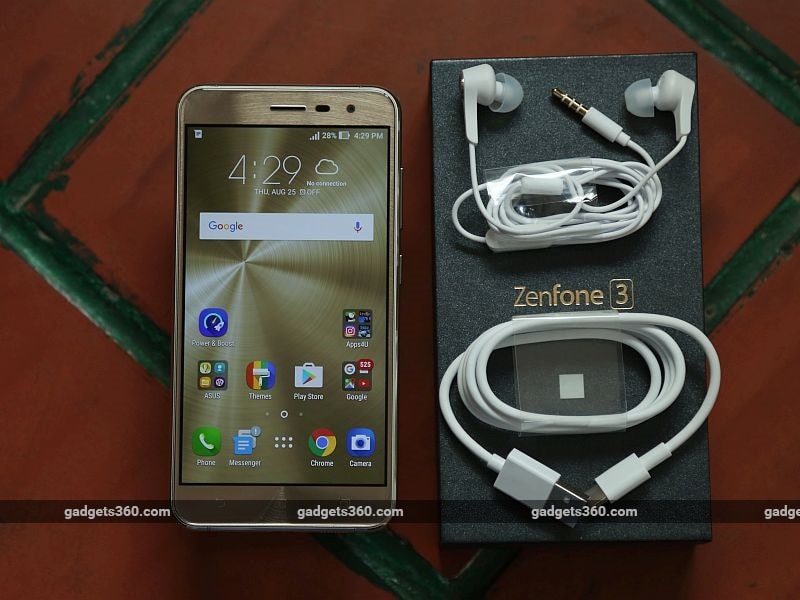
Asus unveiled its first ZenFone range of smartphones back in 2014, targeting the budget and mid-range segments in India. With the second-generation of models, Asus followed the same strategy but didn't quite achieve the same level of success in India thanks to stronger competition.
In 2016, Asus has a different plan for the ZenFone 3 range. This time around, the Taiwanese company wants to compete with brands such as Apple and Samsungin the high-end segment. Peter Chang, Region Head, South Asia and Country Manager for Asus India has confirmed to Gadgets 360 that the company is looking to increase its market share in the premium segment.
Asus has launched multiple models in the ZenFone 3 generation, namely the 5.2-inch ZenFone 3 (ZE520KL) priced at Rs. 21,999; the 5.5-inch ZenFone 3 (ZE552KL) at Rs. 27,999; the ZenFone 3 Ultra (ZU680KL) at Rs. 49,999; the ZenFone 3 Laser (ZC551KL) at Rs. 18,999. The most premium model, named ZenFone 3 Deluxe (ZS570KL), is available priced at Rs. 49,999 with a Special Edition variant priced at Rs. 62,999.
We got the 5.5-inch Asus ZenFone 3 (ZE552KL) for review in Shimmer Gold. The smartphone will also be available in Moonlight White, Aqua Blue, and Sapphire Black.
The ZenFone 3 (ZE552KL) sports an all-new design which is different from its predecessors, as well as impressive innards. But will it be enough to allow Asus to break free of its "budget brand" tag and break into a different league, where it will have to take on some heavyweights? We try to find out in our review.
Look and feel
At a time when almost every second smartphone launched in India sports an all-metal design, the ZenFone 3 is a refreshing change. Asus has used 2.5D curved Corning Gorilla Glass both on the front and rear, which makes the device look elegant. The Taiwanese company's signature concentric-circle pattern at the rear dubbed "Zen design" looks classy and we like it a lot. During our review period, we received several questions from people about the handset, because of its interesting look.
At a time when almost every second smartphone launched in India sports an all-metal design, the ZenFone 3 is a refreshing change. Asus has used 2.5D curved Corning Gorilla Glass both on the front and rear, which makes the device look elegant. The Taiwanese company's signature concentric-circle pattern at the rear dubbed "Zen design" looks classy and we like it a lot. During our review period, we received several questions from people about the handset, because of its interesting look.

The glass on the front and rear are held by a metal frame which feels sturdy. The rounded sides made gripping the handset easy. We have to commend Asus for its attention to detail. The rear has no visible antenna bands; instead they run along the bottom and top.
The 5.5-inch display dominates the front, and you'll also see the earpiece, standard sensors, and a front camera. Asus has used capacitive Back, Home, and Recents buttons which are placed right below the display. They responded well at all times, and our only complaint is that they are not backlit, which meant that we were often fumbling to find them in the dark.

At 7.69mm thick and 155 grams in weight, the ZenFone 3 is not the slimmest or lightest smartphone available in the market. Due to the use of glass on both the front and rear, the ZenFone 3 is slightly slippery and we preferred using it with both hands for a better grip, but we were never too uncomfortable with it. We also wish that the protruding rear camera had been flush with the back panel as we were afraid during our entire review period that the lens might get scratched. Asus however claims that a sapphire lens on the ZenFone 3 will provide protection from any type of scratch.
The rear sports the primary camera accompanied by an LED flash, and also the fingerprint scanner which is placed just below the camera. There is an Asus logo near the bottom. The right packs power as well as volume buttons while the left side is where you'll find the hybrid SIM slot. The bottom has the USB Type-C port as well as a speaker grille and microphone. The 3.5mm audio jack is on top.

Asus says that the handset has a 77.3 percent screen-to-body ratio. The 5.5-inch full-HD (1080x1920-pixel) IPS display on the ZenFone 3 is incredibly sharp, and it's a treat to watch videos and play games on this display. At 401ppi and with a brightness rating of 600nits, the display is vibrant and offers rich colours. During our review, we were completely satisfied with its performance. We had no issues with sunlight legibility, and viewing angles impressed us too. A blue light filter makes the display more comfortable to use at night.

Display settings can be controlled using Asus's Splendid app. The display also supports touch recognition through gloves. We tested the feature during our review and the display responded well even when used with gloves on, which is good for people in areas where winters get really cold.
Specifications
The Asus ZenFone 3 (ZE552KL) packs a 64-bit octa-core Qualcomm Snapdragon 625 processor clocked at 2GHz with integrated Adreno 506 graphics, as well as 4GB of LPDDR3 RAM. There is 64GB of inbuilt storage and support for microSD cards of up to 2TB for expansion. Asus is also offering 100GB of free cloud storage space for two years, in collaboration with Google.
The Asus ZenFone 3 (ZE552KL) packs a 64-bit octa-core Qualcomm Snapdragon 625 processor clocked at 2GHz with integrated Adreno 506 graphics, as well as 4GB of LPDDR3 RAM. There is 64GB of inbuilt storage and support for microSD cards of up to 2TB for expansion. Asus is also offering 100GB of free cloud storage space for two years, in collaboration with Google.
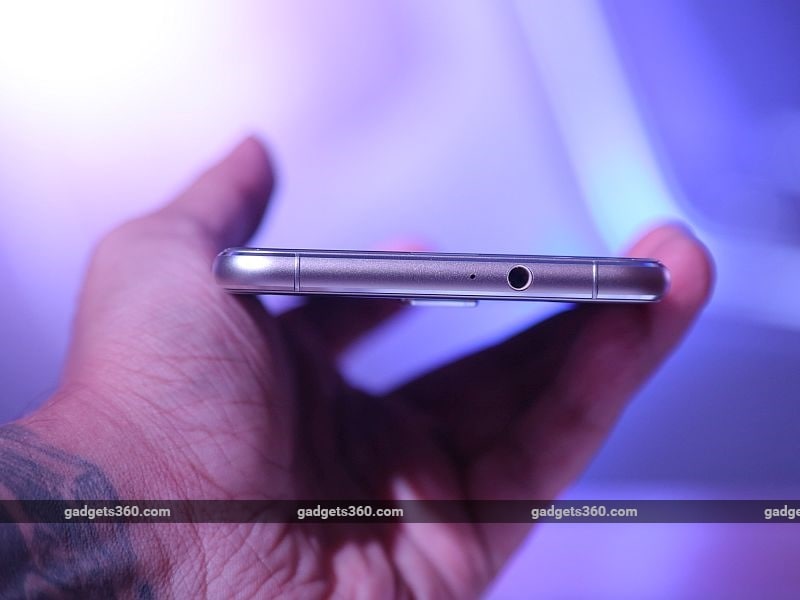
The hybrid SIM slot supports one Nano-SIM and one Micro-SIM or microSD card. Asus notes that both SIM cards support 3G and 4G networks but only one SIM card can connect to 3G/4G networks at a time.
The phone is powered by a non-removable 3000mAh battery, which supports fast charging. There's a 16-megapixel rear camera with f/2.0 aperture, 6P Largan lens, and dual-LED real tone flash. Asus has used Sony's IMX298 camera sensor on the ZenFone 3. There is also an 8-megapixel front-facing camera with f/2.0 aperture. The rear camera uses Asus' new TriTech auto-focus technology which Asus dedscribes as a combination of laser, phase detection and continuous auto-focus modes.
The handset sports a 5-magnet speaker at the bottom which Asus says can deliver up to 40 percent better performance than previous ZenFone models. Connectivity options include Bluetooth, Wi-Fi 802.11b/g/n/ac, GPS/A-GPS, and Glonass.
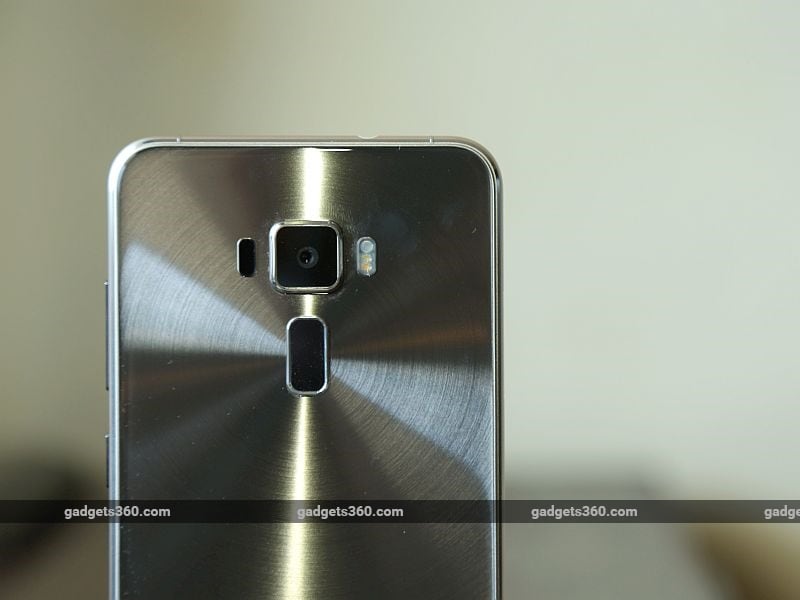
The Asus ZenFone 3 (ZE552KL) runs the company's new ZenUI 3.0 which looks like a complete makeover compared to the first generation ZenFones. The new interface looks clean and sports real-time animated weather and clock widgets; new wallpaper motion effects, and an all-new Theme Store from which users can download free as well as paid themes, wallpapers, icons, and ringtones.
Some of the neat additions to the interface include ZenMotion, which consists of various touch and motion gestures. There's also a one-handed mode that basically shrinks the display to one corner of the screen for easy access. Users have to first enable the One Hand Mode from the ZenMotion settings page. Once done, double-tapping the home key triggers the mode. We found the feature functional and it came in handy when we were on the move.
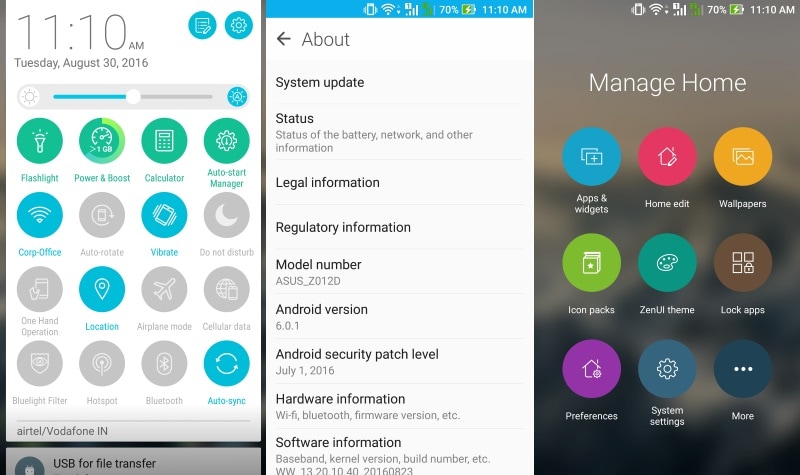
To customise the home screen, you can swipe upwards from the bottom of the display to launch the Manage Home page which includes several options such as Apps & Widgets (to add new apps or widgets to home screen), Home edit (for changing the icon size, scroll effect, and font), Wallpapers, Icon Packs, ZenUI Theme and Lock Apps (which allows you to lock certain apps). The dropdown notifications shade packs the standard toggles for various settings.
An app called Mobile Manager offers to free RAM and storage space as well as check performance and app permissions. We especially liked some animations added for minor functions like the in-built RAM cleaner that showed a meter with the amount of RAM. While setting up the phone, Asus offered a really handy way to download commonly used apps such as WhatsApp, Facebook, Instagram, Twitter, and Snapchat. This feature definitely saved us some time.

Overall, the new ZenUI version looks clean and comes with some nice utility functions. But we wish Asus had reduced the number of preloaded apps on the phone. There is still a plethora of Asus branded apps some of which might never be used, including PhotoCollage, Do It Later, Share Link, ZenFone Care, ZenTalk, Laser Ruler, Quick Memo, Splendid, Puffin, ZenCircle, ZenFlash camera, and MyAsus Service Centre
Camera
The camera app on the ZenFone 3 (ZE552KL) is quick and really easy to use. The 16-megapixel rear camera has an f/2.0 aperture and 6P Largan lens, and uses the company's TriTech auto-focus technology which combines laser, phase detection and continuous autofocus. Asus claims that the device can focus in just 0.03 seconds in all conditions, and during our usage, we did find that the camera focused really quickly.
The camera app on the ZenFone 3 (ZE552KL) is quick and really easy to use. The 16-megapixel rear camera has an f/2.0 aperture and 6P Largan lens, and uses the company's TriTech auto-focus technology which combines laser, phase detection and continuous autofocus. Asus claims that the device can focus in just 0.03 seconds in all conditions, and during our usage, we did find that the camera focused really quickly.
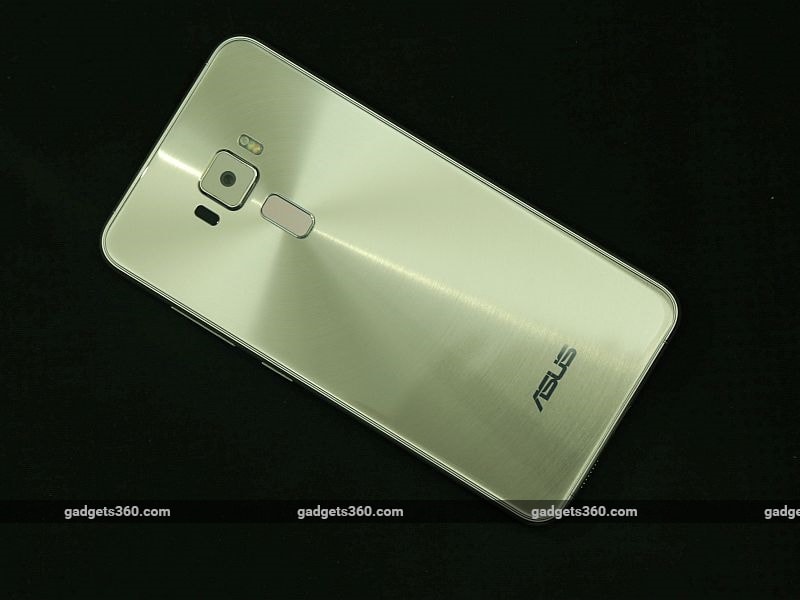
Some other camera features like optical image stabilisation (OIS) and electronic image stabilisation (EIS) are nice features and come in handy for taking still shots and videos respectively. We were however surprised to see the default camera resolution set at 12 megapixels rather than 16 megapixels. One can however change the resolution from the camera app's settings.
Pictures taken indoors were excellent, with a great amount of detail and accuracy, thanks to the second-generation laser autofocus technology which comes into play. Outdoor shots were also decent with vibrant colours, and didn't lose detail when zoomed in. The low-light shots from the primary camera were decent as well though we noticed some noise at the edges. As we kept taking more shots at night, we realised that the ZenFone 3 isn't the best choice for low-light shots. In some shots, we saw grain and loss of detail.
ليست هناك تعليقات:
إرسال تعليق